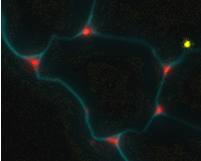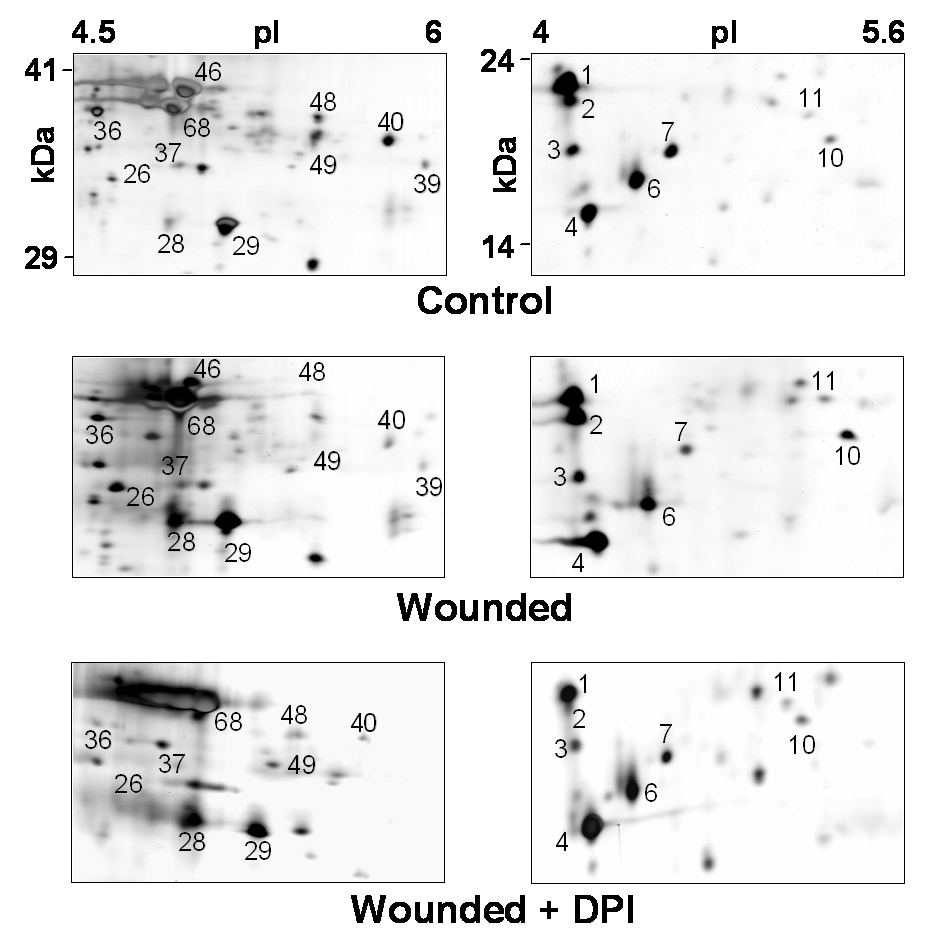Plant Cell Wall group @ ITQB
Recent Research from the PCW
The PCW group looked into various aspects of the cell wall in plant development and stress responses. The laboratory was closed in 2012 and Phil Jackson moved to CEITEC, Brno, in the Czech Republic to pursue proteomics-based research of cytokinin signalling in Arabidopsis. In 2018, Phil moved to BioCity in Nottingham, UK, where he is the principal scientist at Naturally Scientific Technologies. Here are some of the main topics the PCW was investigating:
|
Probing Extensin Function in Cell Walls One main research aim is to understand how developmental changes in the cell wall nanostructure relates to its function. This has largely focussed on the extracellular structural protein, extensin, which undergoes cross-linking to form a 3D protein network, with consequences to expansion growth, cell adhesion (see right) and morphology. [+INFO] |
Extensin (JIM11 epitopes) are located in cell
|
|
Investigating Structural Aspects and Following the identification of extensin peroxidases (EPs) in Lupin and Grapevine, structural differences that might promote high EP activity in these members of the class III peroxidase family were searched for. A further line of research demonstrated that EPs are co-localised with extensin in certain cell lines, supporting their in vivo function as EPs and indicating their developmental importance. [+INFO] |
|
|
Medicago truncatula Proteomics A further objective is to characterise alterations in the cell wall proteome during development and stress responses, and to associate such changes with underlying signalling events. Recent efforts include the characterisation of the Medicago Leaf apoplast protome, and relating wound-related changes in the apoplast proteome with ROS signalling.[+INFO]
|
|
|
Investigating Major Redox Enzymes in Coffee during temperature and hydric Stress Little is known concerning the enzymes regulating redox in coffee under stress. Within a collaborative project, the PCW has cloned 6 leaf peroxidases and 4 ascorbate peroxidases that are predicted to contribute towards redox regulation in coffee. We are now developing a proteomic-based high through-put assay to monitor changes in these, and other redox-related proteins identified within the consortium, during temperature and hydric stress. |
|
|
Pectin and Hemicellulosic active cell wall enzymes in Eucalyptus wood formation Much effort has been applied to elucidating the molecular biology and biochemistry of cellulose and lignin formation in wood. Comparatively little is known concerning hemicelulose and pectin formation in wood-forming species, even though both processes are likely to play essential roles in the early stages of xylem formation, with consequences to final wood properties. |
|

 orcid.org/0000-0002-4564-784X
orcid.org/0000-0002-4564-784X







